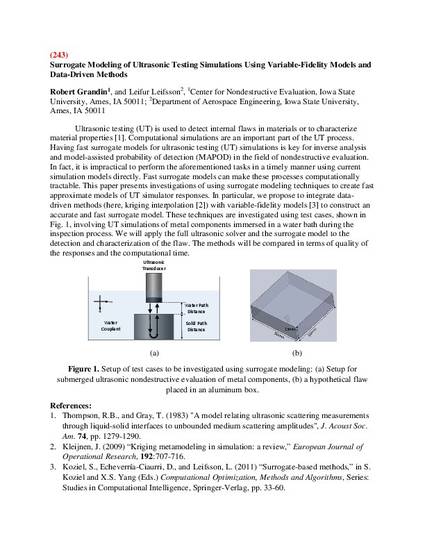
Other
Surrogate Modeling of Ultrasonic Testing Simulations Using Variable-Fidelity Models and Data-Driven Methods
Review of Progress in Quantitative Nondestructive Evaluation
Start Date
2016 12:00 AM
Disciplines
Description
Ultrasonic testing (UT) is used to detect internal flaws in materials or to characterize material properties [1]. Computational simulations are an important part of the UT process. Having fast surrogate models for ultrasonic testing (UT) simulations is key for inverse analysis and model-assisted probability of detection (MAPOD) in the field of nondestructive evaluation. In fact, it is impractical to perform the aforementioned tasks in a timely manner using current simulation models directly. Fast surrogate models can make these processes computationally tractable. This paper presents investigations of using surrogate modeling techniques to create fast approximate models of UT simulator responses. In particular, we propose to integrate data-driven methods (here, kriging interpolation [2]) with variable-fidelity models [3] to construct an accurate and fast surrogate model. These techniques are investigated using test cases, shown in Fig. 1, involving UT simulations of metal components immersed in a water bath during the inspection process. We will apply the full ultrasonic solver and the surrogate model to the detection and characterization of the flaw. The methods will be compared in terms of quality of the responses and the computational time.
Language
en
File Format
application/pdf
Citation Information
Robert Grandin and Leifur Leifsson. "Surrogate Modeling of Ultrasonic Testing Simulations Using Variable-Fidelity Models and Data-Driven Methods" (2016) Available at: http://works.bepress.com/robert_grandin/8/
